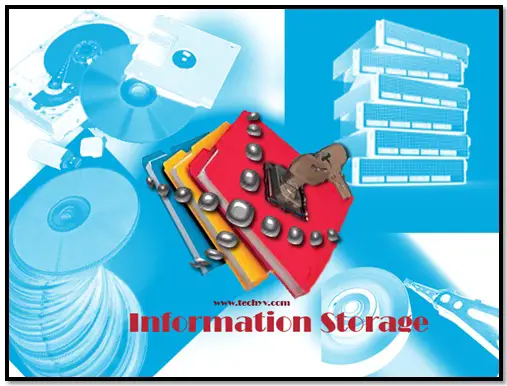Mankind’s Milestone in Information Storage
Information storage approximately begun since mankind started, as apparently shown through paintings and carvings illustrated on caves, rock walls and ceilings. Vital sets of information are needed to be stored and passed for the next generations. CD Rom, DVD and flash drives are the common words that usually cross in people’s minds when they hear about the term computer storage.

Due to the drift pace in technology, stuff like floppy disks and punch cards are almost over and obsolete.
Tracking the history’s timeline, ancient tools must not be disregarded because these are the main foundations of the technologies that we indulge today. From prehistoric man’s usage of early tally’s stick that is dated on about 5000 BC as mnemonic device or memory aid was chiefly used to record, messages and document numbers. The primeval civilization of Egypt used papyrus to accumulate information. Until the 800 AD when the Chinese introduced the process of creating papers, information was kept then in cheaper papers. While in India utilized palm leaves for stocking up information.
A goal in the account of information storage was introduced by the German inventor named Johann Gutenberg in 1440. He was the inventor of the printing press along with printing as a very convenient means in information storing. The 17th century started and tool discoveries that require some sort of support to read the content from certain storage were manufactured. Which are the selectron tube, telegraphon, magnetic drum, magnetic tape, punched tape, punch card and phonograph to name some.
Herman Hollerith constructed the earliest punched-card tabulating and categorizing machines and preferred punched card as the foundation for processing and storing information. He established the company that was to become IBM. Magnetic Tapes was invented in 1928 but used in 1951 to record data, the definite transmitting rate was more or less 7,200 characters per second. Same in the 1950s to 1960s, magnetic drum was a premature structure of computer memory. Core memory was faster and with no moving parts changed the drum memory but ended until semiconductor memory went into the limelight. The Williams-Kilburn tubes were used on many primitive stored programs computers as the first form of random access memory.
Hard disk was later invented by IBM in 1956 with a storage capacity of 5 megabytes of data. It was really a large device which paralleled to old big early computers. Remembering the compact audio cassette with the size of 3.175 mm wide, it was typically used to record audio and distribution of prerecorded music but mainly intended as storage medium to be used by dictation machine. It was introduced by Philips in 1963 and later in 1979, Sony’s Walkman supported the format and became popular and generally used. Remarkably, Commodore 64, BBC Micro and ZX Spectrum home computers in the 1980s used cassettes as an inexpensive substitute for floppy disks as a device for storing data and programs. Robert H. Dennard in 1966 made-up the DRAM or Random Access Memory cells, this device allowed major boosts in memory mass.
The twister memory and bubble memory are magnetic core memories that were invented by Andrew Bobeck in 1970. There are restrictions such as slow access due to cycle mechanisms when accessing bits. On the other hand, first floppy disks were 8 inches in size that used floppy disk drive to read and write. Due to large sizes of floppy disks in home computers, Allan Shugart in 1976 developed the 5 .25 inch floppy disk. The new storage medium was cheaper and it could store 110 kilobytes, which was the reason why 8 inch floppy disks were changed very quickly. Later on 3.5” floppy disks went through development of its own. They were formerly obtainable from up 720 kilobytes double-sided starting at 360 kilobytes single-sided double-density format. Latest formats in the middle 80’s could store 1440 KB of data.
The birth of Compact Disk also known as CD was the new methods of digital data storing between 1980 and 2000. The CD was introduced in 1980 and was initially built-up for storing digital audio. The innovative inventor of the design of the CD was James T. Russell. CD can hold from up to 90 minutes of audio and has a diameter of 120mm in size. The Compact Disk Read-Only-Memory and abbreviated as CD-ROM uses same corporeal format as the CD. It is optical data storage medium wherein letting a great quantity of information to be stored. Even though data compression tools tolerates bigger capacities, the average CD-ROM can support about 650-700 megabytes of data. CD-R disks have tinted dyes that is capable of writing or “burned” once while CD-RW disks are rewritable and can be overwritten many times.
Moreover, technologies in 1989 such as Digital Data Storage (DDS) that evolved from Digital Audio Tape (DAT) technology is a format for back-up and storage of computer data on magnetic tapes. In 1994 compact flash developments were promoted, incredibly little in size but can store a large number of data.
Optical disk storage technology was developed in the structure of DVD. DVD is basically a superior, quicker CD that can hold videos that are cinema-like, better-than-CD audio, still photos, and computer data. DVD aspires to cover business information, home entertainment and computers with a distinct digital format. The progress of the magnetic devices did not end, some latest devices like the Advanced Intelligent Tape were launched and the most important hard disk in a pc is still in magnetic technology foundation.
With new gadgets arising nowadays, flash memory card format such as multimedia cards and memory stick that are marketed nowadays can actually store from up to 2TB. Likewise with SD Cards that are currently used today for digital cameras, cell phones, PDA’s and other devices with SD slots offers great aid in storing large sizes of information. The first blue-laser supported disk or the Blue-ray disk was released on 2003. Blue-ray disk provides better data constructions on optical media. While the HD-DVD as the improved version of DVD is also in the market which has a capacity of 15 Gigabytes for dual-layer capacity of 30 Gigabyte.
Under research and development is the information data storage on holographic memories. Mankind have come this far to pursue means in finding ideal information storage to be preserved and inherit for the future generations.


















